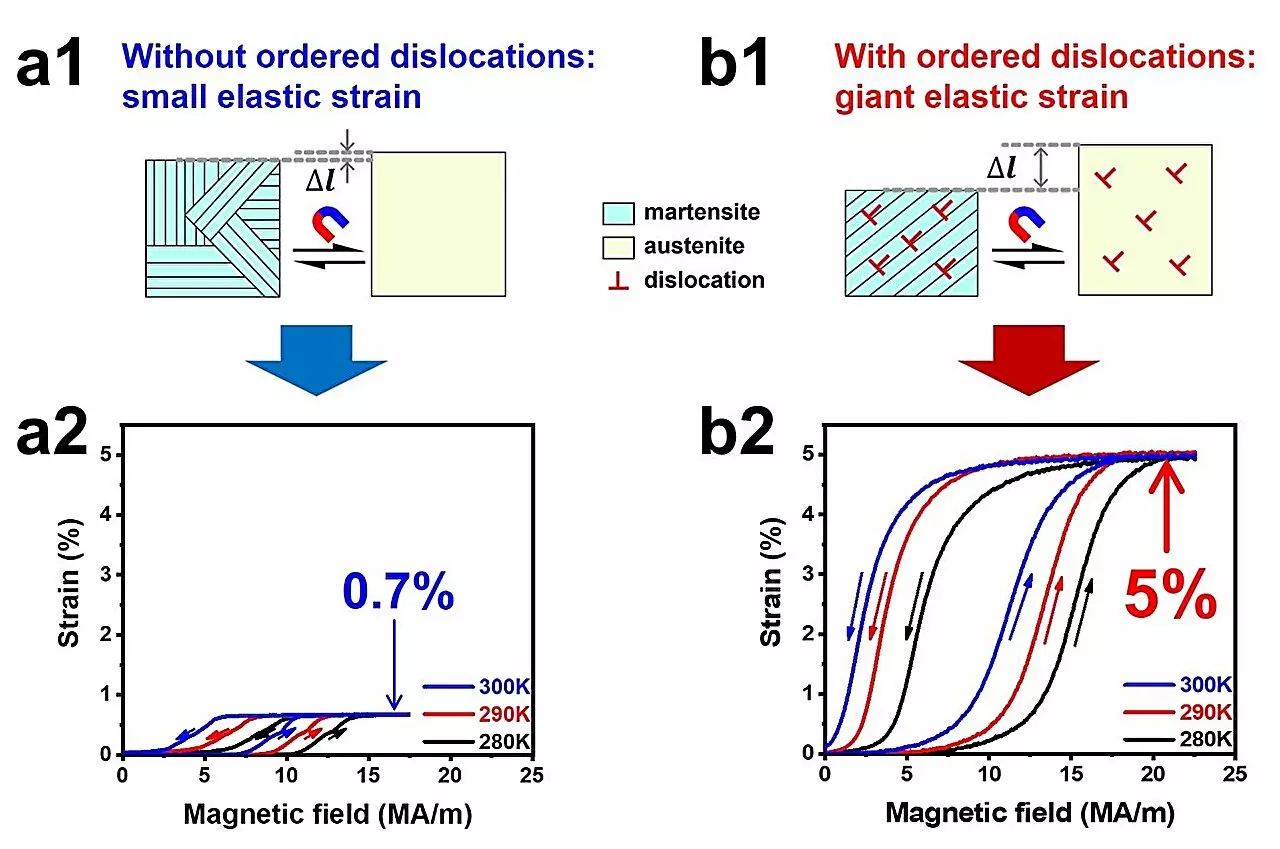In a groundbreaking study recently conducted by a research group, a significant advancement in the field of material science was made with the development of giant magneto-superelasticity in a Ni34Co8Cu8Mn36Ga14 single crystal. This remarkable achievement was made possible by the introduction of arrays of ordered dislocations, leading to the formation of preferentially oriented martensitic variants during the magnetically induced reverse martensitic transformation.
Elasticity, defined as the ability of materials to return to their original shape after deformation, plays a crucial role in various metal alloys. Most metals exhibit an elasticity with a strain of 0.2%, but shape memory and high entropy alloys can display superelasticity with strains of several percent, typically triggered by external stresses. The concept of magneto-superelasticity, induced by a magnetic field, is particularly important for contactless material operation and the development of innovative large-stroke actuators and energy transducers.
The research team, in collaboration with the High Magnetic Field Laboratory at the Hefei Institutes of Physical Science of the Chinese Academy of Sciences, spearheaded by Prof. Jiang Chengbao and Prof. Wang Jingmin from the School of Materials Science and Engineering at Beihang University, conducted a stress-constrained transition cycling (SCTC) training for the Ni34Co8Cu8Mn36Ga14 single crystal. By applying compressive stress, the researchers introduced ordered dislocations with a specific orientation, which subsequently influenced the formation of specific martensitic variants during the reversible transformation induced by a magnetic field.
Through phase field simulations, it was confirmed that the internal stress generated by these organized dislocations played a pivotal role in shaping the preferred martensitic variants. By combining the reversible martensitic transformation with the preferential orientation of the martensitic variants, the single crystal was able to achieve an unprecedented giant magneto-superelasticity of 5%. Additionally, the researchers designed a device utilizing a pulsed magnetic field with the single crystal, which exhibited a large stroke at room temperature due to the giant magneto-superelasticity. The device also demonstrated a rapid response to an 8 ms pulse with a delay of approximately 0.1 ms.
The discovery of giant magneto-superelasticity represents a significant breakthrough in the field of material science and functional materials engineering. This innovative approach to defect engineering offers a promising strategy for accessing high-performance functional materials with diverse applications in various industries. Prof. Wang expressed optimism about the implications of this research, emphasizing the potential for further advancements and applications in the future.


Leave a Reply
You must be logged in to post a comment.